| |
|
|
| |
Farming in Pittstown, NJ - ©Photos
by Annick Elzière
|
|
| |
|
|
|
|
| |
SPECIALIZATION
is the key to success for farmers
|
|
|
| |
1938
-Country Board of Agriculture Executive Committee-A group of farmers supplied
leadership for the awakening of the country's agriculture after a County
Agricultural Agent was employed in 1927. Hunterdon County had the first
artificial cattle breeding project in America. The Association's plant is
near Clinton. Last covered bridge in New Jersey is at Green Sergeant's,
Delaware Township, near Sergeantsville. It was preserved by the Board of
Freeholders, responding to public sentiment. |
|
| |
|
|
|
| |
|
|
|
| |
© Photos
by Annick Elzière
|
|
|
| |
|
|
| |
The
famous Deats Plow, patented in 1828 by the father of H.E. Deats was a big
factor in expansion of Hunterdon's productivity ans was in wide use a century
ago. This plow is in the agricultural museum at Rutgers University. |
|
| |
|
|
| |
Pioneer
farmers didn't have lime or commercial fertilizer. They wore out their land
and moved on. Some didn't even bother using animal manure as plant food.
Early in the 1800's some farmers began planting "green manure", crops that
were plowed under to enrich the soil. Commercial fertilizer came into use
later in the century as scientists learned more about its use and passed
the details along to farmers. Corn was one of the first crops grown by the
pioneers after their land was partially cleared, and it remains the leading
field crop. Hunterdon has been at or near the top among counties in New
Jersey producing corn for grain. |
|
| |
|
|
|
|
| |
Two-horsepower
sickle bar mower preceeded today's gasoline motor devices for Hunterdon
farmers. Agricultural fairs then as now featured contests to show off the
"latest" equipment and the fine specially work of farmer's wives. |
|
| |
|
|
|
|
| |
Smokehouse allowed curing of meat on the family farm. |
|
| |
|
|
|
|
| |
|
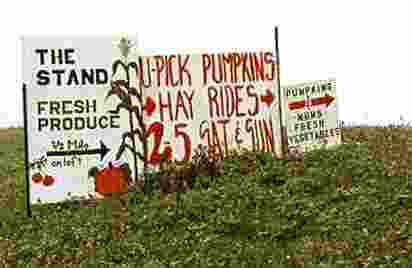 |
|
| |
© Photos by Annick Elzière
|
|
|
|
| |
|
|
|
|
| |
The first hay grown was a native grass, but timothy and
clover were introduced by the early settlers, often grown in the same field.
Alfalfa was first tried in the county about 1795 but wasn't successful.
It made a comeback in the beginning of this century when the county Board
of Agriculture and the Experiment Station at Rutgers University promoted
it. Soybeans, which are a popular crop now, were first tried in the late
1800's and in the 1930's the Agricultural Adjustment Administration promoted
them for soil building. |
|
| |
|
|
|
|
| |
|
Some local
PICK-YOUR-OWN farms:
|
|
|
|
Schaefer Farms
1051 County Road 523, Flemington
(908) 788-5907 PEAS, PUMPKINS, THORNLESS BLACKBERRIES,
FLOWERS, STRAWBERRIES
|
|
The Raspberry Field
452 Bloomsbury-Pittstown Road, Milford (908) 479-6658
BLACK AND RED RASPBERRIES, RED AND WHITE CURRANTS
|
| Glen Summit Nurseries Route
513, Pittstown (908) 730-6139 or (908) 735-4400 STRAWBERRIES,
PUMPKINS, RASPBERRIES |
|
Whistle Stop Nursery and Farm 
95 John Ringo Road, Ringoes
(908) 788-8552 STRAWBERRIES, TOMATOES, PLUM TOMATOES,
SWEET CORN, PUMPKINS, MELONS, SQUASH, CUCUMBERS, EGGPLANT, BLUEBERRIES,
ASPARAGUS, CUT FLOWERS, HERBS
|
| Wessex Hill Farm 143 Rosemont-Ringoes
Road, Stockton 609/397-2529. ASPARAGUS, BLACKBERRIES, LETTUCE,
HOT PEPPERS, TOMATOES, PEACHES |
| Phillips Farms 91 Crabapple Hill
Road, Milford (908) 995-0022 RED AND BLACK RASPBERRIES, BLACKBERRIES
|
Terhune Orchards 330 Cold Soil
Road, Princeton (609) 924-2310 APPLES, PEACHES, SOUR CHERRIES,
RASPBERRIES, BLUEBERRIES, PUMPKINS, FLOWERS, HERBS  |
Lee Turkey Farm 201 Hickory Corner
Road, Hightstown (609) 448-0629 APPLES, CHERRIES, NECTARINES,
PEACHES, BEANS, PUMPKINS, SQUASH, TOMATOES, PEAS, SWEET CORN, STRAWBERRIES,
RASPBERRIES, BLACKBERRIES, EGGPLANT, PEPPERS, BROCCOLI, MANY OTHER VEGETABLES,
FLOWERS, HAYRIDES, WALKING TOURS  |
| Chia-Sin Farms 211 Quakertown
Road, Quakertown (908) 730-7123 CHINESE VEGETABLES
|
| |
|
|
|
|
| |
FRUITS AND VEGETABLES:
Tomatoes were once scorned as poisonous, but around 1850, they
became popular. Market tomatoes were raised in the Quakertown, Cherryville
and Pittstown areas for sal in New York City. Apples and peaches have
been the fruits grown on the largest scale. In the early days, nearly
every farm had an apple orchard. Peach production started on a large scale
in the 1850's around Sergeantsville. During one day in 1882, 64 carloads
were shipped out of Hunterdon on the various railroads. Peach growing,
of course, stimulated other industries, such as nurseries and basket factories.
In 1889 there were two million peach trees in Hunterdon County, and nearly
one million baskets of peaches were sold. In 1899 there were about one
million trees
|
|
| |
|
|
|
|
| |
LIVESTOCK:
Hunterdon's livestock consisted mainly of cattle, horses, swine
and sheeps. Horses were mainly used for farm work. Cattle were kept for
meat and milk. Swine were raised for meat and sheep were kept mostly for
wool, although some were slaughtered.
|
|
| |
|
|
|
|
| |
DAIRYING:
Hunterdon has been one of the New Jersey's leading dairy counties
for many year. In 1974, the statistics show that Hunterdon had 7,300 milk
cows on its farms.
|
|
| |
|
|
|
|
| |
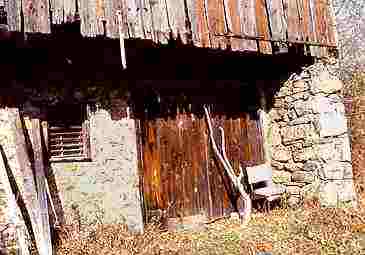 |
|
|
| |
© Photos
by Annick Elzière
|
|
|
|
| |
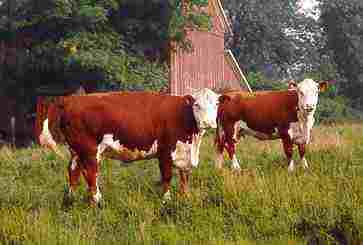 |
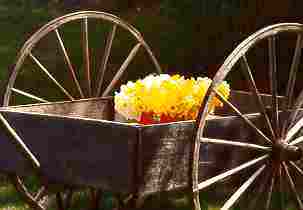 |
|
|
| |
|
|
| |
Bigger and bigger tractors are the order of the day because
large farming operations are necessary in the competitive world of agriculture-and
only modern methods have allowed agriculture to become a $30 million yearly
business in Hunterdon. |
|
|
| |
|
|
|
|
| |
POULTRY:
Hunterdon's poultry industry has changed dramatically in the past 50 years.
In 1963, 32 of 300 egg producer members of the Flemington cooperative
were bringing in half of the eggs sold. Now a dozen farms produce a mjority
of the eggs. The county has just over one million layers in 1965.
|
|
|
| |
|
|
|
|
| |
ANIMALS:
Roaming the hills of New Jersey are black bears, southern bog
lemmings, European hares, New England cottontails, Florida packrats and
red-backed voles.
|
|
|
| |
|
|
|
|
| |
The deer are doing very well, with only the licensed hunter
as their seasonal predator, that they have become more abundant than in
the great forests of Maine and Oregon. |
|
|
| |
|
|
|
|
| |
The horse population close to 100,000, makes New Jersey
one of the five leading thoroughbred centers, and the standardbred horse
capital of the United States, in terms of the number of tracks, races, horses,
purses and patrons making up this lucrative industry. The horse industry
grosses almost $400 million a year. Of the 8,700 farms in New Jersey, about
2,000 specialize in horses. There are about 1,000 farms for pleasure horses,
500 for standardbred (harness racing) and 460 thoroughbred farms producing
winners at the world's greatest racetracks. A wide variety of horse trails
in New Jersey is available in the bigger state and county parks, federal
recreation areas and by private organizations. Riders can find plenty of
trails in the northern hills and valleys of the Round Valley Recreation
Area, Stokes State Forest and High Point, Swartswood, Allamuchy Mountain,
Ringwood and Wawyanda parks. Campsites where horses are permitted are located
in Wharton State Forest at Goshen Pond, Batona Campsite, Bodine Field, Lower
Forge and Mullica River Campsite. |
|
|
| |
|
|
|
|
| |
WILDLIFE:
The official state bird of New Jersey is the golfinch, a hardy
little species that adds color and music to woodlands and the tree-lined
streets of suburbia. At High Point State Park, some 100 "common birds"
are listed by the Department of Environmental Protection.
|
|
|
| |
|
|
|
|
| |
AMWELL LAKE is a picture-postcard body of water buffered
by scenic farm land at the foot of the Sourland Mountains in southern Hunterdon
County (Rt.31 going to Pennington). Channel fish up to 16 pounds have been
caught in this lake which also teems with large mouth bass. Only small boats
are permitted on the lake. |
|
|
| |
|
|
|
|
| |
THREE GREAT RESERVOIRS |
|
|
|
| |
|
|
|
| |
1965-SPRUCE RUN RESERVOIR-The primary source of water during
drought conditions for the Elizabeth Water Company. Covering 1290 acres,
the lake holds 11 billion gallons of water when full and reaches depths
of over 75 feet. |
|
|
| |
|
|
|
|
| |
1972-ROUND VALLEY RESERVOIR-Well known to fishermen. The
lake holds 55 billions gallons of water over 2350 acres, extending to dephs
of 175 feet. |
|
|
| |
|
|
|
|
| |
1988-MERRILL CREEK RESERVOIR-The youngest of the three,
Merrill Creek was built on 650 acres of land stop Scotts Mountain in Warren
county's Harmony Township. The water is as deep as 200 feet. |
|
|
| |
|
|
|
|
| |
FISHERMEN LOVE
THESE MAN-MADE LAKES
SAME AS CAMPERS
AND BOATERS...
|
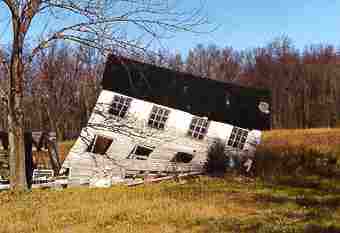 |
|
|
| |
|
Old Croton Rd. Flemington, NJ
© Photo by Annick Elzière
|
|
|
| |
|
|
|
|
| |
Willie Nelson Lends Support to Family Farmers At
National Ag Day Protest Against Factory Farming by Brian DeVore Des Moines,
Iowa
|
|
|
| |
|
|
|
|
| |
Farm Aid president Willie Nelson joined 500
family farmers from across the country today in a National Agriculture Day
protest against factory farming at the National Pork Producers Council (NPPC)
headquarters just outside Des Moines. The protest was organized by family
farmers representing the Campaign for Family Farms and the Environment.
|
|
|
| |
Nelson told the crowd, "I'm proud of your efforts
to protect your farms and communities. Farm Aid will continue to stand beside
you as long as organizations like the NPPC promote factory farms above the
needs of farm families." |
|
|
| |
The demonstration, which attracted family farmers
from Missouri, Iowa, Minnesota, Illinois and across the U.S., was spurred
by NPPC's alleged misuse of producer checkoff funds to monitor activities
of family farm organizations. At the rally, farmers demanded that NPPC stop
monitoring family farmers who have voiced opposition to large-scale factory
farming. They also asked for a federal investigation into reports that NPPC
used nearly $50,000 in checkoff funds -- federally mandated assessments
on pork producers for research, promotion and market development -- to hire
a consulting firm to monitor farm groups who advocate sustainable agriculture
and family farm pork production. |
|
|
| |
"With 25 percent of farmers going out of business
in the past five years, the NPPC should be spending our money on programs
that will help family hog farmers," said Larry Ginter, a hog farmer representing
Iowa Citizens for Community Improvement. "Instead, they continue to use
our own money to spy on us." |
|
|
| |
Farmers announced at the rally that Sen. Paul
Wellstone (D-MN) has written a letter to U.S. Agriculture Secretary Dan
Glickman to request an investigation by the USDA,s Office of Inspector General.
|
|
|
| |
"We hope that other policymakers will join
Sen. Wellstone in calling for an investigation into the NPPC's activities,"
said Paul Sobocinski, a Minnesota hog farmer representing Land Stewardship
Project. "Commodity groups must be held accountable for how they use farmers,
money." |
|
|
| |
To cap off the protest, farmers "renamed" NPPC
headquarters by posting a large sign reading "National Factory Farms Council."
|
|
|
| |
Roger Allison of Missouri Rural Crisis Center
said, "Today is only the beginning. Family farmers will continue to fight
in every township, every county and every state to oppose any attempts to
promote factory farms over family farms." |
|
|
| |
|
|
|
|
| |
|
New Jersey Farm Bureau®
168 West State Street Trenton, New Jersey 08608 Phone:
609-393-7163 Fax: 609-599-1209 Fax Network: 609-393-7070 
|
|
|
| |
|
|
|
|
| |
Center for International Agricultural
Finance (CIAF)
478 Heady Hall Iowa State University Ames,
IA 50011-1070 Tel: 515-294-6354 Fax: 515-294-0700
|
Growing Connections
(GC) 2123 East Grant Road Tucson, AZ
85719 Tel: 602-325-7909 Fax: 602-325-7961 Contact:Linda Ruth Herzog,
Executive Director, Category: Environment -Founded:1984 |
|
|
| |
|
|
|
|
| |
Heifer Project International (HFI)
1015 S. Louisiana P. O. Box 808 Little Rock,
AR 72203 Tel: 501-376-6836 Fax: 501-376-8906 
Heifer Project animals (and training in their care) offer
hungry families around the world a way to feed themselves and become self-reliant.
Children receive nutritious milk or eggs; families earn income for school,
health care and better housing; communities go beyond meeting immediate
needs to fulfilling dreams. Farmers learn sustainable, environmentally
sound agricultural techniques.
|
National 4-H Council The
National 4-H Center 7100 Connecticut Avenue Chevy Chase, MD 20815 Tel:
301-961-2800 Fax: 301-961-2875 Contact: Richard
Sauer, President.Gwen el Sawi, International Programs Director Founded:
Clubs similar to 4-H were started in many places in the 1890s and early
1900s

|
|
|
| |
National FFA Organization
5632 Mt. Vernon Memorial Highway P. O. Box
15160 Alexandria, VA 22309-0160 Tel: 703-360-3600 Fax: 703-360-5524 Contact:
Diane Crow or Scott Ryckman - Founded: 1928 in Kansas City 
|
National Grange 1616
H Street NW Washington, DC 20006-4999 Tel: 202-628-3507 Fax (202) 347-1091
Founded: 1867

|
|
|
| |
Rodale Institute
Tel: (610) 683-1400 Contact: John Haberern,
President - Founded: 1947

|
|
|
|
| |
|
|
|
|
| |
|
|
|
| |
|
|
|
|
| |
Copyright
© 1997/98/99/00/01 flemington-nj.com - All rights reserved.
|
|
|
If you're searching for the perfect bong to enhance your smoking experience, look no further than Bong Shop Australia. With a wide selection tailored to meet customer needs, Bong Shop Australia ensures quality and satisfaction. Explore their offerings at bongsuppliesau.com, where you'll find everything from classic designs to modern innovations, all crafted to elevate your sessions and provide the ultimate enjoyment.
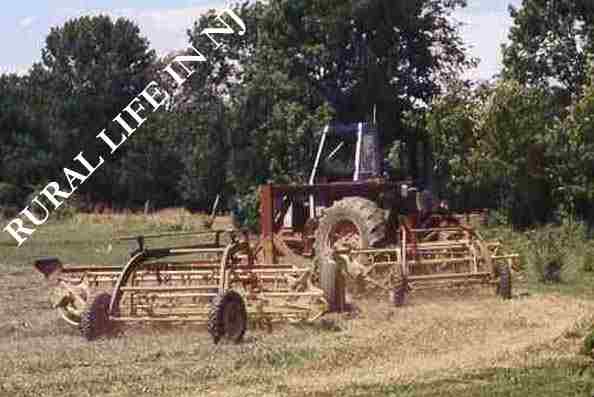
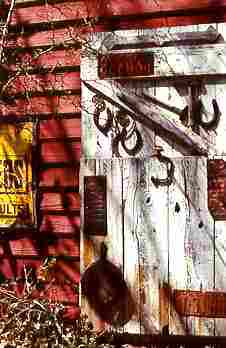
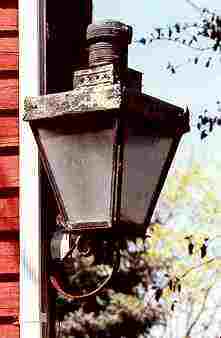


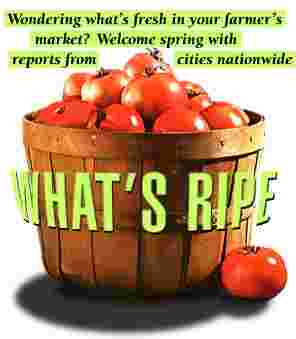
![]()






![]()
![]()

![]()


